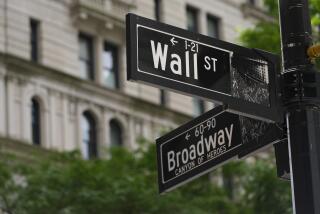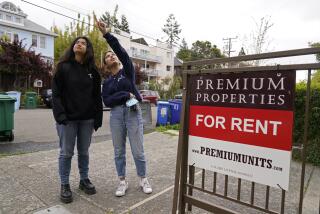Many underwater homeowners are coming up for air
- Share via
WASHINGTON — Home equity is back, and it’s growing fast.
According to the latest data from the Federal Reserve, Americans’ net equity in their houses jumped nearly $500 billion during the last three months of 2012 and $1.7 trillion since spring 2011.
What does this mean to you personally? Depending on where your home is, it could mean that finally — after years of struggling with an underwater mortgage, one that exceeds the value of the home — you are seeing the market value of your property rise into positive equity territory, or at least closer to the break-even mark. Zillow Real Estate Research estimates that nearly 2 million U.S. homeowners exited negative equity status during 2012 alone.
It could also mean that should you wish to sell your house, you’re now in a better position to do so. And if your home is in one of dozens of markets that are experiencing severe shortages of listings for sale combined with strong demand from buyers, this spring could bring you a higher price than at any time in the last seven years.
Here’s what the Fed found in its “flow of funds” study released March 7:
• Thanks to recovering housing values, total home equity is now at its highest level — about $8.2 trillion — since the bust and is gaining rapidly. In 2012, it rose a stunning $1.2 trillion.
• Outstanding mortgage debt continued to fall as owners paid down their balances and refinanced into smaller loans, taking advantage of unprecedented low mortgage rates. Foreclosures and principal forgiveness by lenders also have helped whittle away mortgage debt. Americans now owe about $1 trillion less on their homes than they did in 2008.
Jed Kolko, chief economist for Trulia, an online real estate research and information company, said growing home equity has three key effects. First, owners feel wealthier and are more likely to spend some of that perceived wealth — even if it’s illiquid in the form of real estate equity — on goods and services.
Second, higher equity reduces the likelihood of mortgage defaults. People have a deeper financial stake in their properties and are less willing to risk loss through foreclosure.
Fewer delinquencies, in turn, “mean less stress on the financial system,” thereby reducing the probability of another banking crisis a la 2008-09, Kolko said in an interview.
Finally, by encouraging owners to consider selling — either now or later in the cycle when prices could be even higher — growing equity holdings allow the real estate market to work better, with more transactions, more mobility for families, more new construction, more jobs and so on.
Doug Duncan, chief economist for mortgage investor Fannie Mae, said the recent jump in equity “puts us back on track toward where we were prior to the crisis” and represents a “transition to normal” conditions in the housing market. Though there are markets where last year’s double-digit price gains look bubbly and unsustainable to Duncan — notably in some of the inland cities of California — the increases in values elsewhere tend to be more modest and solid, simply making up for the declines experienced in the latter half of the last decade.
One major market does concern him, however: Washington and its Maryland and Virginia suburbs. Though the District of Columbia has seen significant year-to-year gains in prices recently, Duncan said prices could “flatten out” if the federal budget sequestration and cutbacks in government jobs and defense spending continue for an extended period.
Despite the impressive increases in equity reported by the Fed, there’s a sobering flip side: There are still millions of owners — nearly 14 million, according to Zillow — who have negative equity. They are often the folks who purchased at the wrong time — near the peak of their local markets from late 2005 through 2006 — or used mortgages that required little or no down payment to buy bigger houses than they could afford.
In Miami and Phoenix, about 40% of owners have mortgage debt in excess of property value. In Tampa, Fla., it’s 41.5%; Chicago, 37%; Seattle, 33.5%; Columbus, Ohio, 29%; San Diego and Washington, about 28%; and Los Angeles, 24%.
The good news from the Fed for most of these owners: The odds are good that you are not as deep in negative territory today as you were 12 months ago.
Distributed by Washington Post Writers Group.
More to Read
Inside the business of entertainment
The Wide Shot brings you news, analysis and insights on everything from streaming wars to production — and what it all means for the future.
You may occasionally receive promotional content from the Los Angeles Times.










